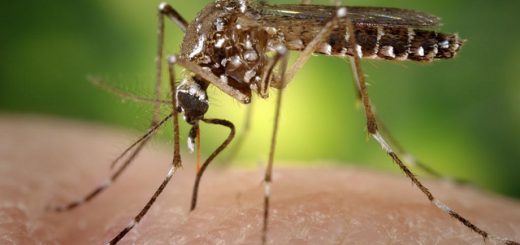Bat immunity takes flight

Ebola and Marburg, Nipah and Hendra, SARS, MERS, and the novel SARS-CoV-2. In recent decades, this collection of deadly viruses wreaked havoc through devastating epidemics and even a pandemic. Humans appear ill-equipped in the biological arms race against newly emerging viruses. In the meantime, a flying little creature remains blissfully unaware of the struggle and strife of humankind: the bat. Various species of bats host all these viruses with little cost or detriment to their own health. There is no battle for survival, no desperate attempts to kill the invader, no pathology… as if bats and viruses achieved a détente. What is the secret behind this apparent pact?
One theory links this antiviral immunity to flight. Bats are the only mammals capable of true flight (no, flying squirrels don’t count!) and are the only ones who face the great energy demands that come with it. During flight, a bat’s heart rate increases to more than 1000 beats per minute and their metabolic rate increases 15-fold or more, compared to just two-fold in most birds. This level of intensity elevates their body temperature to what we’d normally consider a fever. In other words, every single night a bat goes out hunting for food its body is in a constant state of fever.
Here, we enter speculative territory as we explore the so-called “Flight as Fever” hypothesis. Normally, fever is a powerful response to virus infection, a first line of defence that enhances immune responses, priming the body to fight back. Maybe flight is a constant stimulant of the bat immune system, naturally keeping viruses at bay1.
This airborne view of the subject sparks the imagination but is deceptively simple. What is the connection between flight, metabolism, and immunity? There is more to the story as we delve into the molecular details. The incredible metabolic rate of bats which far exceeds all other mammals does not come cheap, and a feverish state is just the surface price. Metabolism is essentially the making and breaking of chemical bonds to produce energy (or spend it). On the flip side, it comes with toxic by-products known as reactive oxygen species (ROS) which make and break bonds very easily but in the wrong place. These toxic by-products are notorious for causing DNA damage which is associated with ageing. Generally speaking, a high metabolic rate means a short life, with the unique exception of bats: they seem to survive just fine, reaching up to 30 years of age in some species2.
These nifty little creatures found a way around the costs of a high metabolism. Genomic studies of bats showed the evolution of flight 60 million years ago was accompanied by positive selection of genes for DNA damage repair. This is where it gets interesting, because DNA damage is not only caused by high metabolism but also by viruses. Infection is not a passive event going on somewhere in the background, it puts major stress on the cell. So maybe it is not surprising that some of these genes for DNA damage repair function at the crossroads between metabolism and antiviral immunity. When triggered, the immune system sounds the alarm in the body and puts up barricades against invasion, for example by producing interferon (see next paragraph). In other words, the bat’s inbuilt repair toolkit may have evolved for the benefit of flight but with the added bonus of increased antiviral immunity3.
Interferons essentially act as messengers of invasion, alerting all other cells in the neighbourhood to close their gates and be on guard. Research on the interferon gene cluster of fruit bats found that it is the smallest of all known mammals, with the quirk that it is always switched on. Keeping cells in this constant alert state, not just when a virus is present. On the other hand, other species had a very expanded gene cluster that activates when necessary. It seems like bats evolved different ways of achieving the same goal, which is a stronger and faster immune response than other mammals. Whether this is all connected or just additional proof of bats having a unique immune system is speculative4.
This tantalising theory linking flight, metabolism, and immunity may explain why bats can live with deadly viruses and why this appears unique among mammals. However, it brushes over one key element of the immune response: inflammation. For humans, constant immune activation would cause widespread inflammation, which attacks the virus but eventually also the host through immune pathology. Severe disease is often not caused by a pathogen, but by the immune system reacting and, indeed, over-reacting to it. But as usual, bats seem to have it all under control. Their bag of immune tricks for every occasion includes a dampened inflammation response and even the complete evolutionary loss of a whole family of inflammation genes. This may be the reason why bats are able to tolerate viruses instead of attacking them (and themselves) violently5.
Ultimately, more research is necessary to validate if this hypothesis flies or falls. We need clear causation links between flight, metabolic changes, DNA damage repair, and immunity. We also need to account for exceptions. That’s right, bats are not all-powerful in front of every single virus, for example they can be killed by the notorious rabies virus. So far, nobody understands the reasons behind this famous exception, and it shows us that not even bats have nailed down the perfect immune balance. But one thing is certain, they have something we don’t. We can learn a lot from bats on how to handle viruses, fight them, or indeed, tolerate them. Now more than ever, the entire world has its eyes on the one true flying mammal, waiting for answers on the how’s and why’s of bats’ unique relationship with viruses.
This article was specialist edited by Dzachary Zainudden and copy-edited by Richard Murchie











very interesting, indeed.